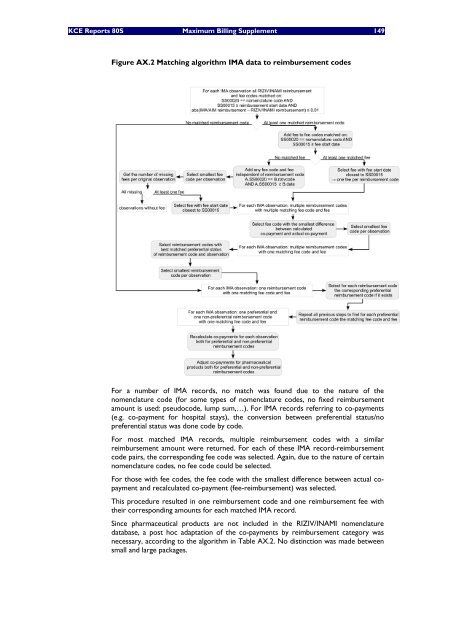Download het supplement - KCE
Download het supplement - KCE
Download het supplement - KCE
Create successful ePaper yourself
Turn your PDF publications into a flip-book with our unique Google optimized e-Paper software.
<strong>KCE</strong> Reports 80S Maximum Billing Supplement 149<br />
Figure AX.2 Matching algorithm IMA data to reimbursement codes<br />
For a number of IMA records, no match was found due to the nature of the<br />
nomenclature code (for some types of nomenclature codes, no fixed reimbursement<br />
amount is used: pseudocode, lump sum,…). For IMA records referring to co-payments<br />
(e.g. co-payment for hospital stays), the conversion between preferential status/no<br />
preferential status was done code by code.<br />
For most matched IMA records, multiple reimbursement codes with a similar<br />
reimbursement amount were returned. For each of these IMA record-reimbursement<br />
code pairs, the corresponding fee code was selected. Again, due to the nature of certain<br />
nomenclature codes, no fee code could be selected.<br />
For those with fee codes, the fee code with the smallest difference between actual copayment<br />
and recalculated co-payment (fee-reimbursement) was selected.<br />
This procedure resulted in one reimbursement code and one reimbursement fee with<br />
their corresponding amounts for each matched IMA record.<br />
Since pharmaceutical products are not included in the RIZIV/INAMI nomenclature<br />
database, a post hoc adaptation of the co-payments by reimbursement category was<br />
necessary, according to the algorithm in Table AX.2. No distinction was made between<br />
small and large packages.

















